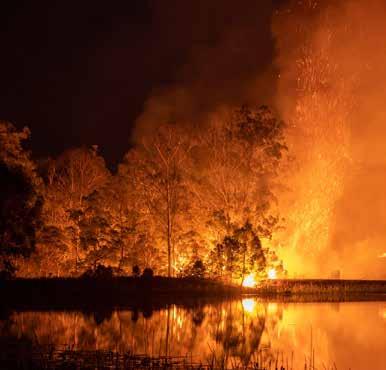Leaderspeak | Urban Environment
E
very urban activity has an impact on the environment. Whatever citizens buy, eat, and throw away, the way they move around and where they live, work and play, all have an impact on the environment. Most of these activities impact the environment negatively. Cities need to create an ecosystem of infrastructure and services that not only just fulfil the growing requirements of citizens but also protect the urban ecosystem. This is not just happening in urban areas. Human activities in villages are also impacting the environment. The fast pace of development has reduced biodiversity by destroying the habitats of plants and animals. Forestry and farming have affected the largest areas, where trees and shrubs had been partly or totally cleared. The protection of tropical rain forests is of great significance as the balance between animals, plants and soil is very fragile. In urban areas, the construction of concrete jungles and reduced focus on open spaces is affecting the availability of public spaces for socializing and recreation. This is affecting the quality of life especially for children, elderly population. Cities of developing and under-developed nations, especially those which have a high density of population, need to focus on building open green spaces and pedestrians pathways.
Green City Mission
There are many cities which have started their own campaigns for keeping their cities clean and green. People are joining and supporting such initiatives with community participation. But if the governments want to have a longterm impact on cities’ sustainability, they need to come out with a concrete policy framework which guides urban local bodies on the path of sustainable and green development. Government of West Bengal had initiated a comprehensive Plan of Action to meet the challenge of rapid
32 February 2020 | www.urbanupdate.in
Green city concept is smart Urbanisation is providing opportunities for development in various aspects and economic prosperity to citizens on one hand but on the other such development in many cities are happening at the cost of the environment. The well-being of communities is increasingly at risk due to escalating pollution, environmental degradation, mounting demand for water, food and energy. Cities need to take care of their ‘green’ and ‘blue’ ecosystem to remain sustainable and continue their journey of prosperity urbanization by initiating Green City Mission. It is to be noted that the state had rejected the idea of Smart Cities and, instead, came out with this mission. Green City Mission is implemented throughout all cities covering all municipal corporations/municipal areas and aims at addressing growing challenges of rapid urbanisation with strategic interventions through the concept of ‘greening’ and ‘blue-ing’. The state government intends to build an environmentally friendly, sustainable, liveable, energy positive, IT-friendly and safe city. According to Mission Guidelines, the state had plans for urban afforestation, beautification of public spaces, naturefriendly parks, pocket forests, avenue plantation, hedges and green creepers as view cutters, rooftop farming, kitchen gardens, vertical gardens and floriculture/ tall tree nurseries are some examples of activities that can be taken up. The state had also directed municipal authorities to enhance the ratio of open spaces to built-up spaces beyond minimum norms. The state also wants to implement a green plan on land available with public institutions including schools, colleges, universities, office complexes etc. The
mission also encourages “Blue-ing” through conservation of water-bodies, encouraging water-based recreation (boating, fishing etc) and canal, waterfront greening and beautification. The state government has envisaged solar panels with net metering facilities on rooftops, canal-tops, bus-shelters and even on water-bodies on floating blocks or as sheds in car parking areas. LED lights in street lights and at all places including homes should be encouraged. All new buildings should be encouraged to be green certified. All norms laid down by ECBC (Energy Conservation Building Code), State Government Policy on Renewal Energy and Building Rules in so far as they relate to energy conservation matters should be followed. Cycle tracks and cycle stands are also part of the project to encourage last-mile mobility in a safe manner and for this traffic control should also be made cyclist-friendly. Electric vehicles including e-rickshaws should be encouraged. Pre-paid quick charge stations should be available in fuel pumps. Wastewater recycling, rainwater harvesting (“Jal Dharo Jal Bharo”), energy-saving light sensors and efficient appliances should be adopted.













